
Anúncio
Collapse
No announcement yet.
BMW i8
Collapse
Ads nos topicos Mobile
Collapse
Ads Nos topicos Desktop
Collapse
X
-
Protótipos em análise
Algumas considerações segundo entendi:
Posição de condução agradavelmente desportiva, banco em posição baixa, volante quase vertical. O túnel, onde estão as baterias, é alto.
Neste momento, o motor eléctrico do carro emite um barulho.
Motor térmico com um som algo rude quando entra em acção. A partir das 4000 rpm, começa a emitir um som mais agradável. O som é mais desportivo perto das 7000 rpm, embora não tanto graças ao motor, mas sim, ao sintetizador/gerador de som sintético que equipa este carro (como tem o novo M5, por exemplo).
Aceleração impressionante em modo Sport (motores eléctrico e térmico ligados).
Carro bastante envolvente em curva, é extremamente ágil, a direcção é leve, embora muito directa. O carro não adorna muito.
É fácil notar que o centro de gravidade é muito baixo.
As propriedades dinâmicas são o ponto forte do carro.
Não é grande coisa quando se quer curvar a maior velocidade, pois o chassis está, neste momento, afinado para subviragem (facilmente "dispara" o DSC). Subviragem que é jusitificada, segundo os engenheiros, com os pneus optimizados para oferecer baixa resistência. Este ponto ainda vai ser alvo de desenvolvimentos.
Em curvas de baixa-média velocidade, o carro permite soltar a traseira, permitindo voltar a pô-la no sítio certo assim que as condições sejam favoráveis. É progressivo, havendo uma boa dose de ajustamento no chassis.
A tracção, com os dois motores a puxar, é excelente.
O i8 de produção deverá ser um bom carro desportivo, embora não deva ser considerado um autêntico desportivo ou track car.
A resposta do motor e o handling são duas duas das suas proezas, devendo ser dois factores que chamam a atenção de quem procura um novo conceito, mas também apelará ao típico entusiasta da condução.
É um carro intrigante, bastante divertido e viciante que combina um sistema multifacetado que permite conduzi-lo a um ritmo bastante alto, com qualidade dinâmicas e envolvência, numa pista. O carro promete ser ainda mais excitante quando falhas como a subviragem forem corrigidas.
What is it?
The BMW i8 is the second model from BMW’s new i brand. Driven here for the first time in prototype form, the low slung coupé is planned to go on sale in the UK next April at a price that will, BMW officials hint, pitch it into direct competition with the conspicuously more conventional Porsche 911 Carrera 4S, which retails here for £87,959.
A more extrovertly styled roadster version of the advanced hybrid, which boasts an official fuel consumption figure of over 113mpg and average CO2 emissions in hybrid mode of under 59g/km, is also under development at BMW’s Munich-based R&D centre, although it isn’t likely to see local showrooms until 2015.
Billed as a progressive sportscar, the i8 was first shown in concept car guise at the 2009 Frankfurt motor show. At the time, it ran a diesel-electric hybrid system. However, it has since made way for a petrol-electric set-up that shares various components, including its main electric motor, with the BMW i3’s exclusively electric driveline.
Like its smaller sibling, it can run in pure electric mode, but only for distances of up to 22 miles and a top speed of 75mph owing to its relatively small battery. Overall range promises to be quite spectacular thanks to a 42-litre fuel tank that is mounted underneath the rear seats. BMW is not prepared to make a figure official but it is already quite clear that the i8 will be among the most fuel efficient sportscars ever placed into production.
The i8’s styling has evolved during the four-year development phase, although the basic silhouette and flamboyant layered body design has been retained, giving the i8 a strikingly futuristic external appearance which is carried through to the snug two-plus-two interior. Length, width and height are put at 4689mm, 1942mm and 1293mm respectively, making it 449mm longer, 152mm wider and a scant 3mm taller than the second-generation BMW Z4 – a car against which the new BMW has been extensively benchmarked.
As with the i3, the i8 makes extensive use of carbonfibre and aluminium in a bid to offset the inherent weight of its advanced driveline. A so-called Life Module fashioned from carbonfibre forms the main structure, to which BMW has attached carbonfibre-framed doors and aluminum sub-frames both front and rear.
The outer body is a combination of carbonfibre (roof), aluminium (bonnet and outer door panels) and composite plastic (bumpers, fenders). BMW has also revealed the i8 will be the first production car to make use of Gorilla Glass – as seen on the latest smart phones. It is used for the rear window, providing added sound deadening properties for the interior.
A definitive figure is yet to be revealed, though the i8 is claimed to weigh less than 1490kg – undercutting the two seat Z4 sDrive35iS by 35kg despite providing accommodation for up to four adults (at a squeeze) along with 150 litres of luggage space underneath a liftback-style tailgate at the rear.
The primary form of propulsion for the i8 comes via a compact, turbocharged 1.5-litre three-cylinder petrol engine – the same B38 designated unit earmarked to head into a production version of the BMW Compact Active Tourer and third generation of the modern day Mini in 2014, albeit in a milder state of tune than the 2.0bar of turbocharger boost pressure used on the i8.
Mounted transversely behind the cabin, the aluminium block unit delivers an impressive 228bhp, giving it the highest specific output of any existing BMW engine at 152bhp/litre, along with 236lb ft of torque – all sent to the rear wheels via a six-speed automatic gearbox boasting a conventional torque converter.
The efforts of the compact petrol engine are supported by two electric motors, the larger of which is mounted up front within the front axle assembly, which is shared with that on the four-wheel drive BMW 650i xDrive. With 129bhp and 184lb ft of torque, the unit channels drive through a two-speed automatic gearbox.
The front electric motor is used to drive the front wheels during the start-up phase provided there is sufficient charge within the battery, a 5kWh lithium-ion unit that is housed within the centre tunnel, providing the i8 with zero local emission capability – something that will enable it to enter sidestep city charges like that in place in London. It also chimes in to boost performance in combination with the petrol engine, providing the i8 with four-wheel drive capability
There is also a smaller electric motor with 13bhp and 81lb ft sited at the rear next to the combustion engine. But while it is capable of providing additional drive to the rear wheels, it is principally used as a generator to top up the battery and alternatively as an alternator to collect and store kinetic energy during braking and periods of trailing throttle.
Interestingly, the rear electric motor is also used to smooth out delivery by providing direct drive to the rear wheels as the petrol engine is brought into the drive process. In doing so, BMW claims to have eliminated a slight dip in delivery due to typical turbocharger lag.
BMW quotes a combined 357bhp, endowing the carbonfibre intensive i8 with a power-to-weight ratio that betters that of the steel-bodied Z4 sDrive35i at 240bhp/tonne. Combined torque peaks at 420lb ft, some 44 per cent of which is available the moment you brush the throttle thanks to the inherent qualities of the electric motors.
As with the i3, the i8 receives three distinct driving modes: Comfort, Sport and Eco-Pro – all of which involve a combination of electric and petrol engine propulsion, albeit with different throttle, steering and damping mapping.
Underpinning BMW’s new age supercar is a largely aluminium chassis boasting double wishbones up front and a five link arrangement at the rear. The latter set-up is mounted directly to the aluminium sub-frame that supports the combustion engine and smaller of the electric motors. In keeping with BMW engineering philosophy, the new car boasts what the i8's project leader, Carsten Breitfeld, describes as a "near to perfect 50:50 weight distribution". The electro-mechanical steering system is borrowed from the X3, albeit with unique programming that aims to provide the i8 with sharper reactions.
The standard-fit wheels are aerodynamically optimised and measure 20 inches in diameter. They are 7.0 inches wide up front and 7.5 inches wide at the rear, shod with relatively narrow and high profile 195/50 and 215/45 tyres respectively. Buyers will be able to order more conventional 20in alloy wheels with wider 215/45 and 245/40 profile rubber – as fitted to the car i8 prototype we drove – for added grip.
What is it like?
Distinctly new world, both in appearance and driving character. You enter the BMW i8 through butterfly-style doors that hinge skywards from the front, opening to reveal a rather narrow aperture through which to climb. There is also a substantial carbonfibre sill to negotiate before you drop down into a high-backed driver’s seat, which boasts generous electronic adjustment.
It’s tricky getting in to, but the driving position of the i8 is pleasingly sporting, with a low-set seat squab, almost vertically mounted steering wheel and high centre tunnel that houses the battery. A push of a start button next to the gear lever triggers a chime to indicate the ignition has been tripped, at which a set of brilliant graphics, which alter in colour depending on the drive mode chosen, appear within the instrument panel – blue for E-drive and Eco-Pro, red for Comfort and Sport.
The default driving mode is Comfort, meaning the middle of the three hybrid settings. With sufficient battery charge, our first few hundred metres at the wheel of the i8 is achieved under electric power alone, with the front electric motor providing drive to the front wheels.
In its current state of development, there remains some whine from the electric motor, but otherwise refinement levels are spectacular. A touch more throttle nudges the speed up to 40mph, at which the petrol engine is triggered. It sends its drive to the rear wheels, instantly endowing the i8 with four-wheel drive capability.
The three-cylinder petrol engine does sound a bit gruff when it kicks into action. But once you’ve got it percolating above 4000rpm, the i8 emits a satisfying deep-chested thrum that becomes more sporting the closer you venture towards the 7000rpm cut out. The appealing acoustics aren’t all from the engine itself, though. As with the latest iteration of the M5, BMW has combined the actual sound of the engine with a synthetic sound generator to arrive at the desired result. They call it progress...
With the front electric motor and petrol engine providing drive to the front and rear wheels respectively, there is genuinely impressive acceleration in Sport mode, in which there is a noticeable change in character, with added throttle and steering response along with firmer damping for greater body control. The official acceleration claims – 0-62mph in 4.5sec and 50-75mph in 4.5sec – put the i8 on par with the outgoing BMW M3 for outright straightline pace. No slouch, then.
I drove the i8 on BMW’s Miramas test track in France. On the infield handling course and surrounding roads, it immediately dispelled any lingering doubts about its ability to deliver truly engaging driving traits. It is extremely agile, with somewhat light but extremely direct electro-mechanical steering. You can sense the low centre of gravity in the way the futuristic looking coupé enthusiastically turns in to corners. Its dynamic properties are characterised by an inherent responsiveness, nimbleness and light-footedness to the handling, which immediately stands out as one of the new car’s strengths.
There is very little body movement as lateral forces rise, although its ability to carry serious speed through corners is limited by the current state of chassis tune, which clearly favours understeer – something it tended to do quite early on the freshly laid bitumen of the BMW test track. It’s nothing too troubling, mind. But when the rest of the car is so well sorted, the deficiency in front-end bite tends to be magnified, and it quickly had the DSC (dynamic stability control) working as we began to push the i8 hard through corners.
BMW’s engineering team says the understeer is partly down to the characteristics of the specially developed Bridgestone Potenza tyres. They boast relatively soft side walls and are engineered to deliver low rolling resistance for maximum efficiency, even with the optional rubber. Still, this is an engineering mule, not a pre-production prototype, and predictably BMW says there are developments in the pipeline that will provide the definitive production version of the i8 with greater mid-corner purchase than the example we sampled.
The good news – no, the great news – is that you can dial back the threshold of the DSC and rely on it’s the prodigious torque developed by the front electric motor and combustion engine to kick out the tail in low-to-medium-speed corners, allowing you to straighten the line when conditions permit. So it is progressive, but there's also a good deal of adjustability in the chassis as well.
The automatic switching between pure electric and hybrid modes initially proved a distraction, but there is tremendous traction when all power sources are called up, allowing you to confidently lay the throttle back at the apex safe in the knowledge that drive is being sent both to the front and rear wheels. This leads to tremendous drive out of corners and, its safe to say, excellent all-season qualities.
Should I buy one?
I was worried the i8’s on-road ability would be compromised by its high-tech driveline and all the ancillary components that go with it – too complex, too heavy and skewed too much towards ultimate efficiency to make it much fun to drive. And after talking to the team responsible for its engineering, it seems as though BMW was quite concerned too – at least when they conceived the distinctly new-world coupé back in 2009.
That is why the German car maker has spent big on carbonfibre construction technology in a move that will see them bring the i8 to market early next year at a weight that undercuts many conventional two-door rivals at the scales and also endows it with the lowest centre of gravity of any existing BMW model. In doing so, it provides the basis for what is truly a landmark car.
After a brief stint in the thinly padded driver’s seat of this engineering mule, we’re confident the production i8 will live up to its billing as a sportscar. It is no track weapon – not in the traditional sense, at least. But it delivers the sort of response, directness and handling prowess that I’m sure will not only see it appeal to early adopters in search of something out of the ordinary but traditional driving enthusiasts as well. And nor does it lack for pace.
The i8 is an utterly intriguing, unreservedly fun and fantastically addictive car to drive, combining a multi-faceted drive system that is strong enough to propel it along at quite a furious pace together with engaging dynamic qualities that make it terrific fun on the track. And with a few tweaks to dial out that initial understeer, it promises to be even more exciting to pedal at the limit.
Porsche 911 Carrera 4S versus BMW i8 coupé? Old world versus new world. Expect it to be one of next year’s most anticipated comparison tests.
Algumas considerações, segundo entendi, deste teste:
Nota de escape sugestiva.
Carro com algumas aresta a limar, mas quanto mais conduziam, mais se apercebiam do investimento enorme que a marca teve que fazer nesta manobra arriscada que valeu a pena.
Seja em modo eMode+EcoPro ou Sport com o DSC desligado, nota-se que é um BMW agradável de conduzir. Transmite boas sensações.
Há coisas a melhorar, pelo menos, nestes protótipos: o ecrã do iDrive é ilegível, segundo percebi, quando o sol bate no mesmo. Em termos dinâmicos, a gestão da caixa é boa, à excepção do que acontece nos extremos. Porém não são detalhes como estes que afectam a ideia geral que com ficaram do carro.
É necessário puxar até às 7000 rpm para aproveitar a nota de escape e a caixa.
Gostavam que o comportamento fosse mais semelhante ao de um RWD, como esperado num BMW. O i8 mostrou-se um carro muito neutro, evidenciando-se bastante que é um AWD.
Não é um autêntico desportivo.
A autonomia eléctrica varia bastante com o tipo de utilização do carro. A velocidade máxima permitida em modo eléctrico é de 120 km/h.
Em termos de sensações aproxima-se de um M. A direcção é eléctrica, mas muito precisa.
Em modo Sport, a suspensão torna-se mais firme, embora não prejudique o conforto. A travagem é boa, não se assemelhando a outros híbridos em que o pedal não parece estar conectado ao carro.
Preços e especificações deverão sair no próximo mês, ainda antes do Salão de Frankfurt, sendo as primeiras entregas em Abril. Nessa altura, esperam ter oportunidade de fazer um teste completo com o carro de produção, pois, segundo eles, vale a pena esperar.
El momento de verdad para la nueva BMW i será cuando el i3 se enfrente al mercado, porque será el primer contacto del público con la marca, será el que cambie la percepción y las expectativas que se puedan tener de los nuevos modelos de BMW i. En cuanto al cupé i8 que será desvelado en el próximo salón de Fráncfort tiene todo el aspecto de ser un proyecto que dará en el clavo. Sólo necesitábamos comprobarlo en vivo.
BMW posee un espectacular centro de pruebas en Miramas, en el Sur de Francia, y es donde nos dejaron por un breve periodo de tiempo dar unas vueltas al volante del BMW i8. Había tres unidades a disposición y las tres lucían el mismo camuflaje. Los interiores también recibieron su parte de camuflaje para que no pudiésemos fotografiarlos. Hay que conservar algo de misterio hasta Fráncfort...
Si bien intentar llevar el i3 como si fuese un deportivo no era la actitud correcta, al fin y al cabo es un coche principalmente urbano, con el i8 la gente de BMW nos animaba a darle caña. Para ellos, el i8 es un deportivo que sea un coche híbrido es secundario. Y es que si bien la tecnología empleada es nueva para BMW, el resto, es decir un coche con el que disfrutes conduciendo, saben hacerlo muy bien.
Es algo que también se aprecia en el interior. Inmediatamente te sientes como en un BMW, todo es familiar e intuitivo, mientras que en el i3 todo era nuevo y tenías que acostumbrarte a ello. Cualquier comprador de i8 que haya tenido antes un BMW se verá en terreno conocido.
Aún así, el i8 y el i3 tienen en común la filosofía de construcción Life Drive que hemos visto en el i3 y que tendrán todos los modelos BMW i en el futuro. La resistente y ligera célula habitable del i8 está diseñada para tener una configuración de 2+2 o en su defecto de 2+1. Ésta célula está hecha del famoso plástico reforzado con fibra de carbono del que BMW viene hablando y usando puntualmente en algunos BMW M desde hace unos años. En cuanto al chasis es un de aluminio, por sus propiedades de ligereza y resistencia.
El BMW i3 estará disponible como coche 100% eléctrico o como eléctrico de rango extendido. En cambio el BMW i8 (conocido internamente como i12) es un híbrido en paralelo de tipo plug-in que puede funcionar en modo 100% eléctrico durante un cierto periodo de tiempo y en ciertas condiciones, vamos como la mayoría de híbridos plug-in de última generación. De este modo, en el tráfico urbano, por debajo de los 65 km/h, el i8 puede circular casi siempre en modo eléctrico. En cuanto al motor gasolina, nos hablan de un consumo medio de 2,6 l/100 km. Hay que tener en cuenta que el depósito del i8 es de tan sólo 42 litros.
El motor eléctrico es exactamente del mismo modelo que el usado en i3, pero aquí está situado delante. Para ser exactos, ligeramente por delante del eje anterior...y en eso en BMW tiene un cierto significado, tanto simbólico como en términos de comportamiento dinámico. En el i3, el motor eléctrico desarrolla 170 CV y entrega 250 Nm de par máximo con un pack de baterías de iones de litio de una capacidad de 22 kWh. En el caso del i8, el motor eléctrico es de 130 CV pero el par máximo se mantiene en un valor de 250 Nm, mientras que su batería de iones de litio es de 6,4 kWh (está ubicada en el túnel central, justo detrás del motor eléctrico).
El motor térmico es el 3 cilindros B38 de 1.5 litros turbo montado en posición transversal delante del eje posterior y anima únicamente las ruedas traseras. El motor desarrolla 230 CV y 320 Nm, mientras que el escape Boysen (idéntico a los que equipan los BMW M) aportaba una sonoridad muy sugestiva mientras dábamos vueltas a la pista de Miramas. Cabe destacar que también hay un segundo motor eléctrico (de 13 CV) situado detrás cerca del motor térmico. Está ahí para cumplir sobre todo las funciones de generador/alternador para cargar las baterías, pero puntualmente puede ayudar al motor térmico a mover las ruedas traseras. En su conjunto, los tres propulsores desarrollan un potencia total de 357 CV y 570 Nm. La transmisión es una clásica automática de convertidor par de 6 relaciones. La carga completa de las baterías, si usamos el cargador BMW opcional, se puede hacer en tan sólo 2 horas. También es cierto que su capacidad no es la de un 100% eléctrico.
Probamos los tres modos de propulsión y aunque BMW todavía tiene 6 meses para afinar algunos puntos, cuanto más conducíamos el i8 más nos dimos cuenta que la enorme inversión necesaria fue una jugada muy arriesgada por parte de BMW, pero que valió la pena. Ya sea en el modo más edulcorado eMode+EcoPro o en el Sport con el DSC desconectado, al volante se nota que es un BMW y agradable de conducir, las sensaciones son buenas.
Aún así, hay algunas cosas que mejorar, al menos en estos prototipos. A bordo, La pantalla del iDrive es ilegible cuando el pega fuerte, el color azul de su tipografía tampoco ayuda a que sea legible. En términos dinámicos, la gestión de la caja de cambios es buena en todos los aspectos, salvo en los extremos, y de paso el motor necesitaría poder subir hasta las 7.000 rpm para aprovechar más el escape y la caja de cambios. Son detalles que no influyen sobre la excelente valoración global que tenemos sobre el coche.
Por último, nos habría gustado que su comportamiento dinámico fuese más cercano al de un tracción trasera, como esperamos muchos de un BMW, mientras que el i8 se mostró muy neutro dejando ver que en la práctica es un tracción integral.
El i8 no es un auténtico deportivo, en el sentido que no está pensando para atacar en el Nordschleife. Y aunque al final acabarán mencionando su tiempo por vuelta, no será la prioridad en su lanzamiento. De momento, es algo que reservan para los chicos de BMW M. Dicho esto, es capaz de acelerar de 0 a 100 km/h en 4,5 segundos y su velocidad máxima es de 250 km/h.
La autonomía de las baterías varía mucho en función del uso que hagamos del coche. De todos modos, la velocidad máxima permitida en modo eléctrico es de 120 km/h, un valor nada desdeñable.
En términos de sensaciones, se acerca a un BMW M. La dirección es eléctrica, cómo no, pero al mismo tiempo es muy precisa. Cuando pasamos al modo Sport, las amortiguadores se endurecen, pero no merman el confort. La frenada, por su parte, ofrece un buen mordiente, el tacto no es como el de otros híbridos donde el pedal parece no estar conectado al coche.
Precios y especificaciones serán desvelados poco antes del salón de Fráncfort. Las primeras entregas se harán a partir del mes de abril. Para entonces, confiamos en poder tener una prueba completa del BMW i8 de serie. Creo que vale la pena esperar.Editado pela última vez por xeLa; 08 August 2013, 23:48.
Comentário
-
BMW desvenda o seu híbrido enchufável i8: 362 CV que consomem 2,5 l/100 km
Apenas unos días después de presentar al mundo su primer coche eléctrico, el i3, BMW ha desvelado las primeras imágenes del que será su híbrido enchufable i8, que con un conjunto motor formado por un gasolina de 231 CV y un eléctrico de 131 CV, acelerará de 0 a 100 km/h en sólo 4,5 segundos y consumirá -promete la marca- apenas 2,5 litros a los cien. BMW i8 Concept Spyder, descapotable híbrido.
El centro de pruebas de Miramas, en Francia, ha sido el escenario elegido por BMW para dar a conocer cómo será el i8, cuyo lanzamiento está previsto para 2014 por un precio que se estima podría moverse alrededor de los 100.000 euros, si bien éste no ha sido confirmado aún por la firma con sede en Múnich.
Este deportivo híbrido viene a refrendar la apuesta por la movilidad eléctrica de BMW, representada en su submarca i, presentada hace ahora dos años, y que desde este otoño contará con el eléctrico i3 en el mercado, desde 35.500 euros.
El nuevo deportivo tiene una carrocería caracterizada por su aerodinámica y su ligereza, gracias a la combinación en su elaboración del plástico reforzado con fibra de carbono. Como en el i3, en su interior contará cuatro plazas, en una disposición de asientos de 2+2. Sus puertas de acceso se abrirán en vertical y aún falta por que BMW ofrezca imágenes del interior del vehículo.
El sistema híbrido enchufable del i8 consta de un motor de gasolina de tres cilindros con tecnología TwinTurbo, que entrega 231 CV, un propulsor eléctrico de 131 CV y una batería de ión de litio recargable en un enchufe doméstico. El i3 podrá circular en modo exclusivamente eléctrico con una autonomía de 35 kilómetros y alcanzará una velocidad máxima de 120 km/h. Sus emisiones, según afirman desde BMW, se quedarán en unos excelentes 59 gramos de CO2 por kilómetro recorrido.
Via http://www.eleconomista.es/interstitial ... 00-km.html
Comentário
-
+
Desenho dramático e a nova tecnologia aplicada
-
Caro e não tão rápido como pode parecer
Algumas considerações:
BMW i8 review, specs, price and video
By Harry Metcalfe
August 2013
We take a drive in the new BMW i8, the comapany's new plug-in hybrid sportscar. Review, video, spec and price details here.
What is it?
According to BMW, the i8 is ‘a real-world performance car’, with the ability to run 22 miles on electric power, crack 0-62mph in 4.5secs and top out at a limited 155mph.
BMW is yet to announce official figures, but the g/km CO2 rating is expected to fall below 59g/CO2, with a combined fuel consumption rating of 113mpg. Being a plug-in hybrid, the UK government will give you a £5000 subsidy towards buying one. Even so, expect to pay £95,000 for the privilege when this classy BMW arrives in showrooms in April or May 2014.
Technical Highlights?
The i8 is so stuffed of technology, it’s hard to know where to start. Power comes from three different sources: There’s a 130bhp electric motor up front, powering the front wheels via a 2-speed gearbox, then there’s a transverse 3-cylinder, 1499cc turbocharged engine sitting mid-ship – kicking out 230bhp and 236lb ft of torque to the rear wheels via a six-speed automatic gearbox.
The petrol engine is then also assisted by a 10KW electric motor-come-generator (connected to the engine via a belt) tasked with starting the engine, generating electricity or produce a quick burst of torque whenever the turbo is spooling up to eliminate turbo-lag.
Added together, this gives a total of 360bhp and 420lb ft of torque available to the driver, offering decent performance. Kerb weight is less than 1490kg thanks to the i8’s carbon fibre construction, and extensive use of aluminium for the front and rear sub-frames. Also helping to keep weight to a minimum is the lithium-ion battery, which only has a capacity of approximately 7kwh (and positioned down the spine of the car). This is around a third of the size of BMW’s i3 battery.
What’s it like to drive?
In a word, intriguing. You bring the i8 to life by pushing a ‘start button’, triggering an electronic ‘bong’ as the dash springs to life in front of you. Pull the gear selector into ‘Drive’, brush the accelerator and the i8 creeps away in complete silence.
As speed grows, there’s a noticeable whine from the front motor. It’s in no way unpleasant, and gives you the distinct impression that you’re in something special. Go beyond 40mph, or push the accelerator to the floor, and the 3-cylinder petrol engine comes into play. At part throttle, you notice it working, but push harder and a distinctive (almost 911-like) warble swirls around the cabin.
For the full i8 experience, though, you need to select ‘Sport’ mode. Only then does the i8 feel quick. As the engine whips around to its 7000rpm limiter, that warble gains a harder edge that’s particularly addictive. What’s most impressive is that you never sense that the front motor is fighting with the rear engine for attention. Driving an i8 feels entirely natural, with no excessive re-gen on the over-run either.
There’s more understeer than expected on initial turn-in, but the engineers think this can be dialed out before customer cars are delivered. Ignoring this, the car feels neutral, with crisp, lightweight and accurate steering – which encourages you to explore the outer limits of the talented chassis.
You sense that because the battery pack sits so low, and the tiny power plants are packaged as close to the centre of the car as possible – the balance of the chassis is near perfect, giving the i8 an impressive deftness through the corners. The only fly in the ointment is that the quoted 0-62mph time of 4.5secs over-flatters the actual performance on offer, and I suspect that this impressive time is a result of the i8’s excellent four-wheel traction and instant torque that all electric motors deliver. The i8 is not in any way slow, but neither is it as punchy as you’d expect.
How does it compare?
There’s nothing like an i8 out there right now. The Fisker Karma came close, but was essentially a full electric car with the engine acting as a range-extender - so very different to the i8. It’s also no longer in production, and weighed 900kg more than the BMW.
Comparing the i8 to a Porsche 911 C4S is hard too, because the philosophy between the two cars is so different. The Porsche offers much more performance and would be dramatically quicker on track, but then the Porsche doesn’t boast 22-mile electric only range or fuel consumption to rival the best super minis on sale today.
One car that might prove a threat is the next-generation Honda NSX, which uses similar technology to the i8, but will have a much bigger engine, delivering 30 per cent more power. It’s expected to weigh more too, although it’s too early to say how it will compare.
Anything else I need to know?
I expect that the tyres fitted to the i8 will be a major discussion point in the future. They’re not conventional performance tyres optimised for ultimate grip, but for low rolling resistance and fuel economy. They’re also relatively narrow, with 195 section front and 215 section rear – so they don’t provide the sort of grip you get from the 245/35 ZR20 front, 305/30 ZR20 rear tyres Porsche fits to the 911 C4S.
You reach the i8’s road-holding limits much earlier, but because the chassis is so fundamentally right, this actually makes it more enjoyable. Just as the Toyota GT-86/Subaru BRZ twins have shown, there’s more to driver enjoyment than ultimate cornering speed, and it’s the same story when you drive the i8 for the first time.
So the i8 is not an BMW M3 replacement or 911 rival; it’s much cleverer than that. Think of it as a downsized Porsche 918 for a tenth of the price, and you’ll be getting close. We’ll know more when we drive production versions early next year, but from this early pre-drive, we know the i8 is going to be very special indeed.
Condução intrigante.
Com a velocidade a aumentar, ouve-se um barulhinho vindo do motor eléctrico posicionado à frente.
Ouve-se um chilrear um pouco por todo o habitáculo, quando se pisa mais forte no acelerador.
Para termos a sensação de ser um carro realmente rápido, temos que activar o modo Sport. O chilreio ganha outro contorno às 7000 rpm e torna-se viciante.
Conduzir o i8 parece totalmente natural, sem o motor eléctrico a "chamar a atenção" toda para si.
Subviragem mais pronunciada que o esperado, embora os engenheiros digam que deve ser corrigido antes da versão final chegar aos clientes, isto é, antes de chegar ao mercado. De resto, o carro parece bastante neutro, com uma direcção leve e precisa, encorajando a explorar os limites do chassis, graças também ao posicionamento das baterias, o equilíbrio do chassis é quase perfeito, com uma destreza impressionante nas curvas.
Um defeito apontado é o facto do tempo dos 0 aos 100 km/h, pois pode sobrevalorizar as capacidades reais do carro, devendo ser alcançado apenas graças ao excelente sistema de tracção integral e ao binário instantâneo que o motor eléctrico entrega. O carro não é nada lento, contudo, não é tão mordaz quanto se pode esperar.
Um 911 Carrera 4 S deve ser muito mais rápido em pista, embora não ofereça 35 km em modo eléctrico ou consumos de fazer inveja a um citadino.
Espera-se que os pneus venham a ser o ponto mais discutível do carro, devido a ser optimizados para eficiência e baixo atrito, sendo bastante estreitos.
Os limites do i8 são alcançados muito cedo devido ao chassis, tornando-o mais agradável.
Não é rival para o 911 ou substituto para o M3, é muito mais que isso. É como que um 918 mais pequeno e a um décimo do preço. Ainda não é a versão definitiva a que conduzimos, mas mostrou que o i8 vai ser um carro muito especial.
Comentário
-
BMW i8, o futuro é hoje e com chave desportiva - Frankfurt 2013
Ya os dimos un adelanto del BMW i8 gracias a la prueba de nuestro compañero Matt Davis, pero el coche aún llevaba algo de camuflaje. Ahora, ya lo podemos ver sin un ápice de vinilo que tape algún aspecto de su carrocería. Y sí, este coche que podría pasar por un concept car es el i8 de producción, de serie.
Bajo la carrocería de plástico reforzado con fibra de carbono (CRFP) nos encontramos con un bloque 3 cilindros de 1.5 litros, sobrealimentado por turbo. Por sí solo ya desarrolla 231 CV y 320 Nm y mueve las ruedas traseras vía una caja de cambios automática de 6 relaciones. Cuenta con un motor eléctrico de 131 CV y 250 Nm anima las ruedas delanteras vía un cambio automático de 2 relaciones.
Con la tracción integral a su disposición y la combinación de los dos motores, el BMW i8 exhibe una potencia máxima de 362 CV y 570 Nm. Unas cifras que permiten a BMW anunciar prestaciones a la altura de la estética del i8 con un 0 a 100 km/h en 4,4 segundos, pero con un consumo de tan sólo 2,5 l/100 km. Unas cifras posibles gracias, entre otros, a su excelente coeficiente aerodinámico (0,26) y peso contenido, pues en orden de marcha el i8 pesa menos de 1.490 kg.
Recargar la batería de iones de litio refrigerada por agua y con una capacidad útil de 5kWh es una operación relativamente rápida, especialmente con la estación de carga BMW que baja el tiempo hasta hora y media.
El BMW i8 tiene dos controles del "modo de conducción". Al Driving Experience, es similar al de cualquier BMW reciente (Sport, Eco Pro y Comfort, que es el modo conectados por defecto), el i8 añade el eDrive. Éste, sin sorpresa, acciona el modo de propulsión 100% eléctrico.



 Editado pela última vez por BLADERUNNER; 10 September 2013, 09:04.
Editado pela última vez por BLADERUNNER; 10 September 2013, 09:04.
Comentário
-
Perde bastante para os concepts que o antecederam, mas mesmo assim, faz quase tudo o resto na indústria automóvel parecer vulgar e aborrecido.
Ha sempre um risco com desenhos mais futuristas, já que costumam cair no campo do over-styling, e como tal, têm tendência a ficarem rapidamente desactualizados, o que não deixa de ser irónico.
Mas o i8, apesar de apostar em soluções bastante peculiares, sabemos que não estão lá apenas para show-off, sobretudo todo o complexo trabalho de modelação e integração de elementos que pode ser apreciado na traseira. Existe real substância, e não apenas o resultado de artistas que se excitaram em demasia com lápis e canetas.
O resultado estético final não é de um ícone de beleza, mas, tal como aconteceu com o trabalho do Bangle há quase 15 anos atrás, abre novamente um mundo de possibilidades para o mundo do design e styling automóvel.
É assim que se aborda o futuro... Experimentando novas receitas!
A construção do carro é a cereja no topo do bolo. Abandona a monocoque clássica, tal e qual a conhecemos; é o passo mais firme, para já, na industrialização de um material exótico, como a fibra de carbono; introduz novos paradigmas na resistência ao rolamento, como já tinhamos visto no i3, com rodas de diâmetro generoso, combinado com larguras estreitas; o facto de ser hibrido até acaba por ser secundário.
O seu esqueleto abre possibilidades muito mais entusiasmantes que o seu grupo motriz.
Talvez o primeiro carro de produção, a par com o i3, com um pé firme no séc. XXI.
Muito curioso para ver as reviews desta criatura.
Comentário
-
Eu não sou dado a híbridos mas o i8 em preto até não está mal.
A chave parece engraçada.
O preço e a potência é que desiludem. Haja coragem para andar com semelhante nave espacail, incluindo as portas "olhem para mim", com apenas 360 cv debaixo do pé. Sendo que sem bateria são apenas 200 e tal cv.
Este desenho precisa de 500 cv e de um V8.
Quando transformarem isto num Série 8 (e já agora com M8 ) vai ser muito interessante.
) vai ser muito interessante.
Comentário
-
O carro está mesmo fenomenal. Esteticamente é de um arrojo enorme mas é um arrojo que faz sentido e com elementos que saem fora de tudo aquilo que vemos hoje em dia e que faz pensar que este é sem dúvida um carro do século XXI e não do século XX tal como já foi aqui dito. É uma nova página que na história do automóvel que este carro simboliza com a nova construção e a utilização abundante de fibra de carbono na construção do carro. Mecanicamente é também um carro do mais evoluído que vemos hoje em dia redefine juntamente com o 918 Spyder o conceito de desportivo económico mantendo a parte desportiva em alta com os seus 360cv mas com preocupação na sustentabilidade ambiental com uma autonomia elétrica de 35km. E para além disso é também um desportivo para o dia-a-dia com uma configuração 2+2 com lugares traseiros que parecem minimamente espaçosos para poder levar os miúdos à escola e com a autonomia elétrica de 35km a permitir que este carro seja utilizado vários dias seguidos sem precisar de reabastecer com gasolina. Como desportivo para o dia-a-dia bate o 911 agora veremos a parte dinâmica que poderá não ser tão boa como a do 911 mas que certamente será suficiente para o que BMW quer, um desportivo para o dia-a-dia e que seja ambientalmente sustentável.
Comentário
AD fim dos posts Desktop
Collapse
Ad Fim dos Posts Mobile
Collapse
SECÇÕES
Collapse


































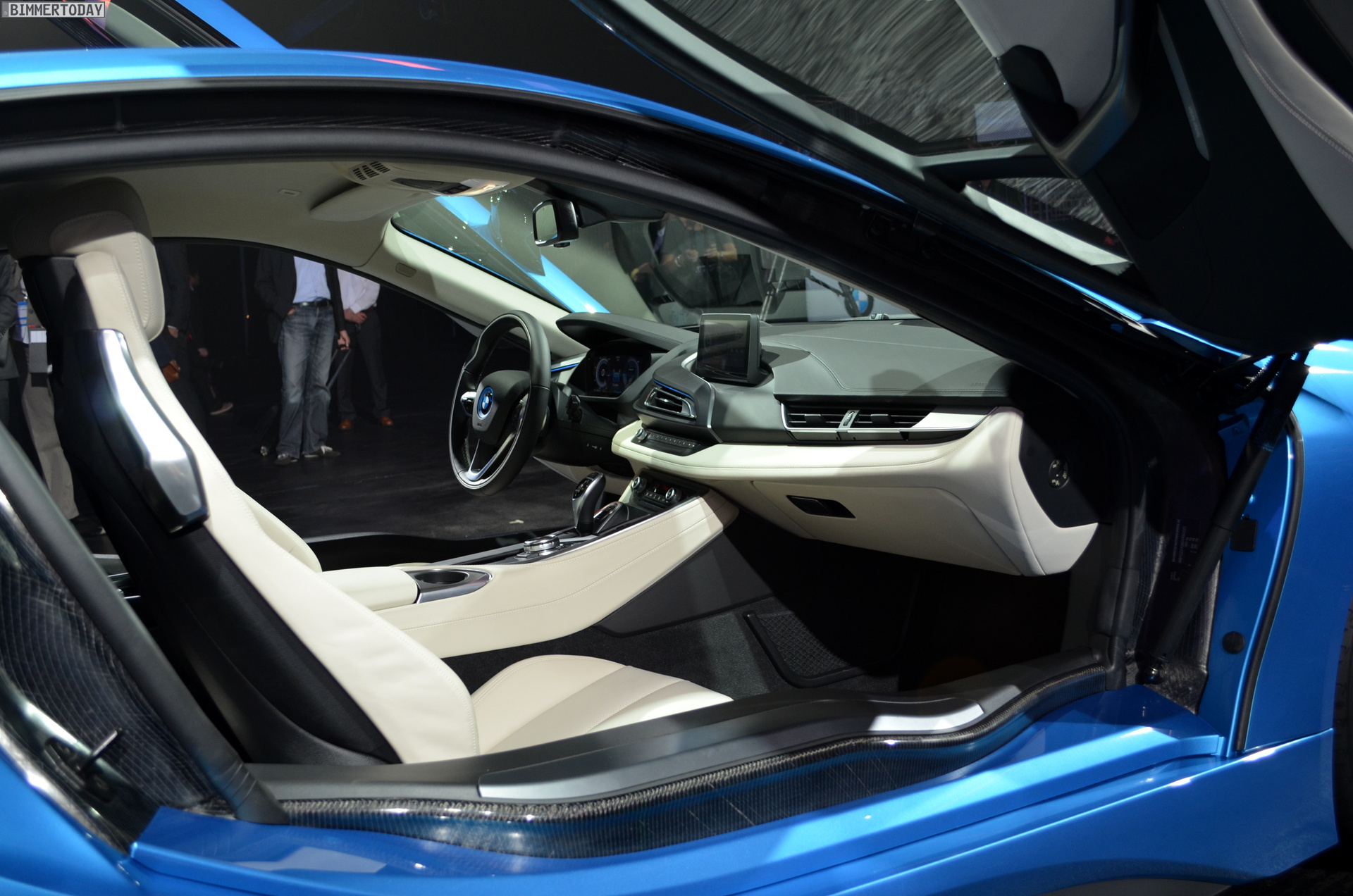
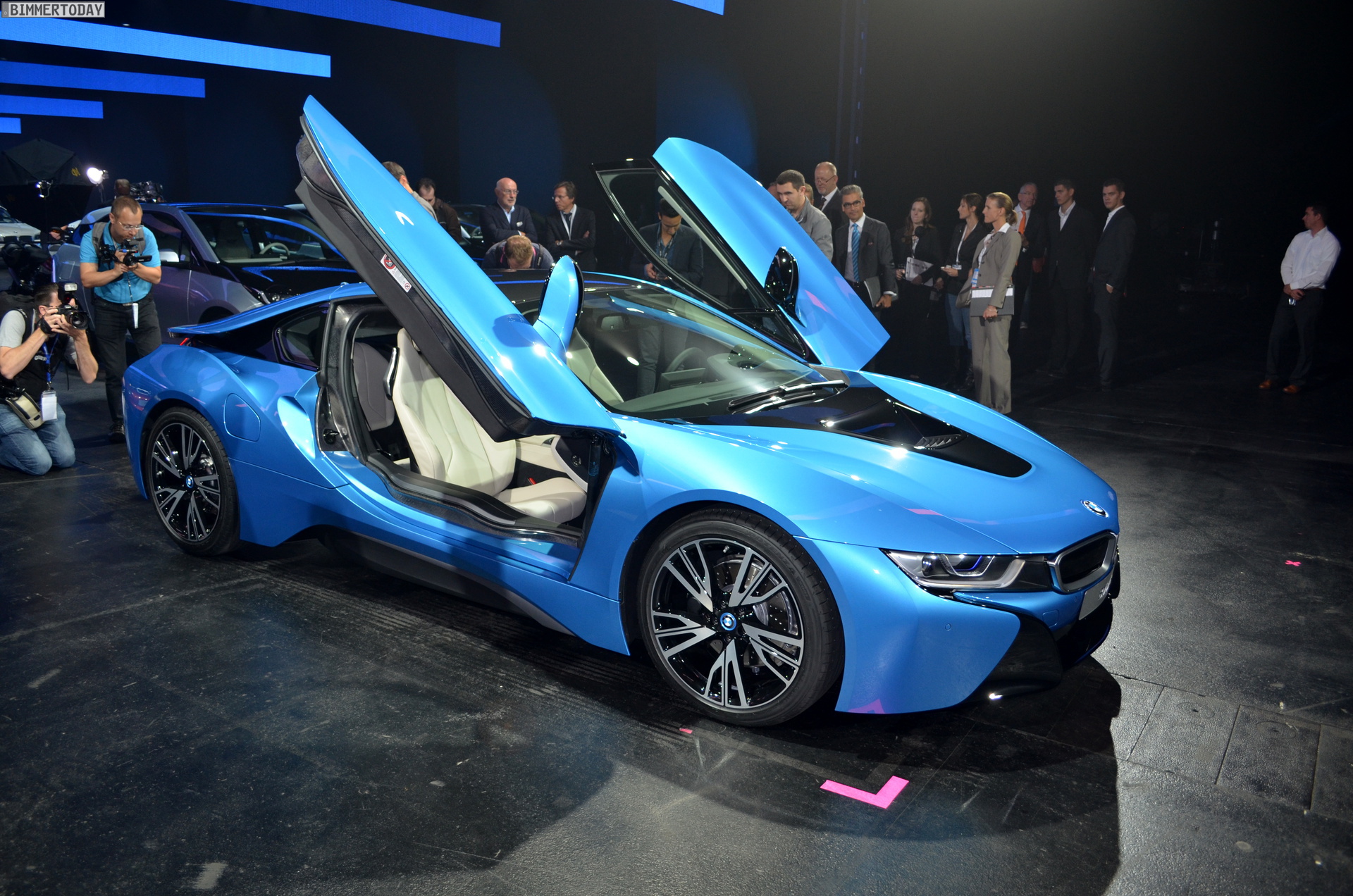
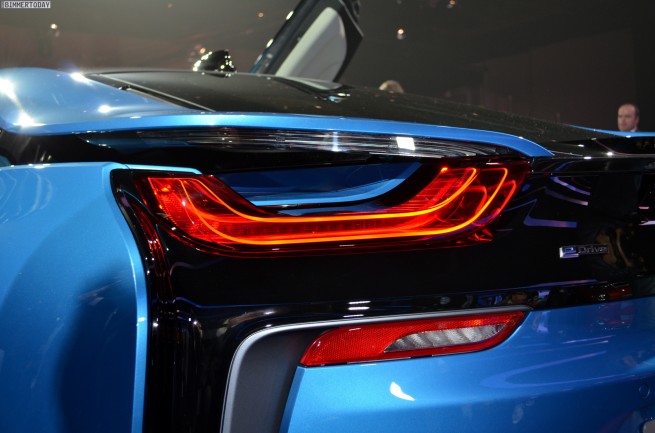
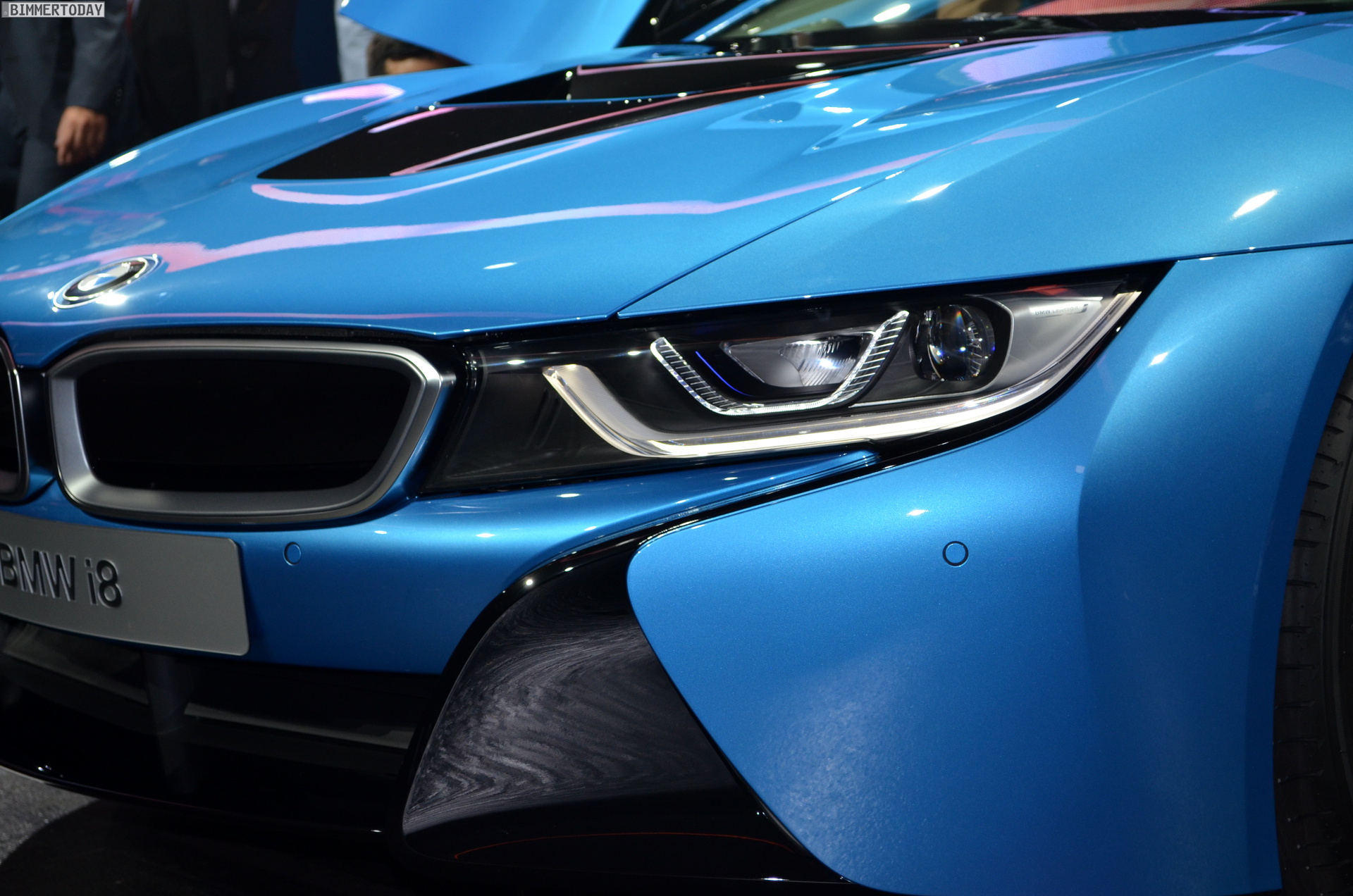
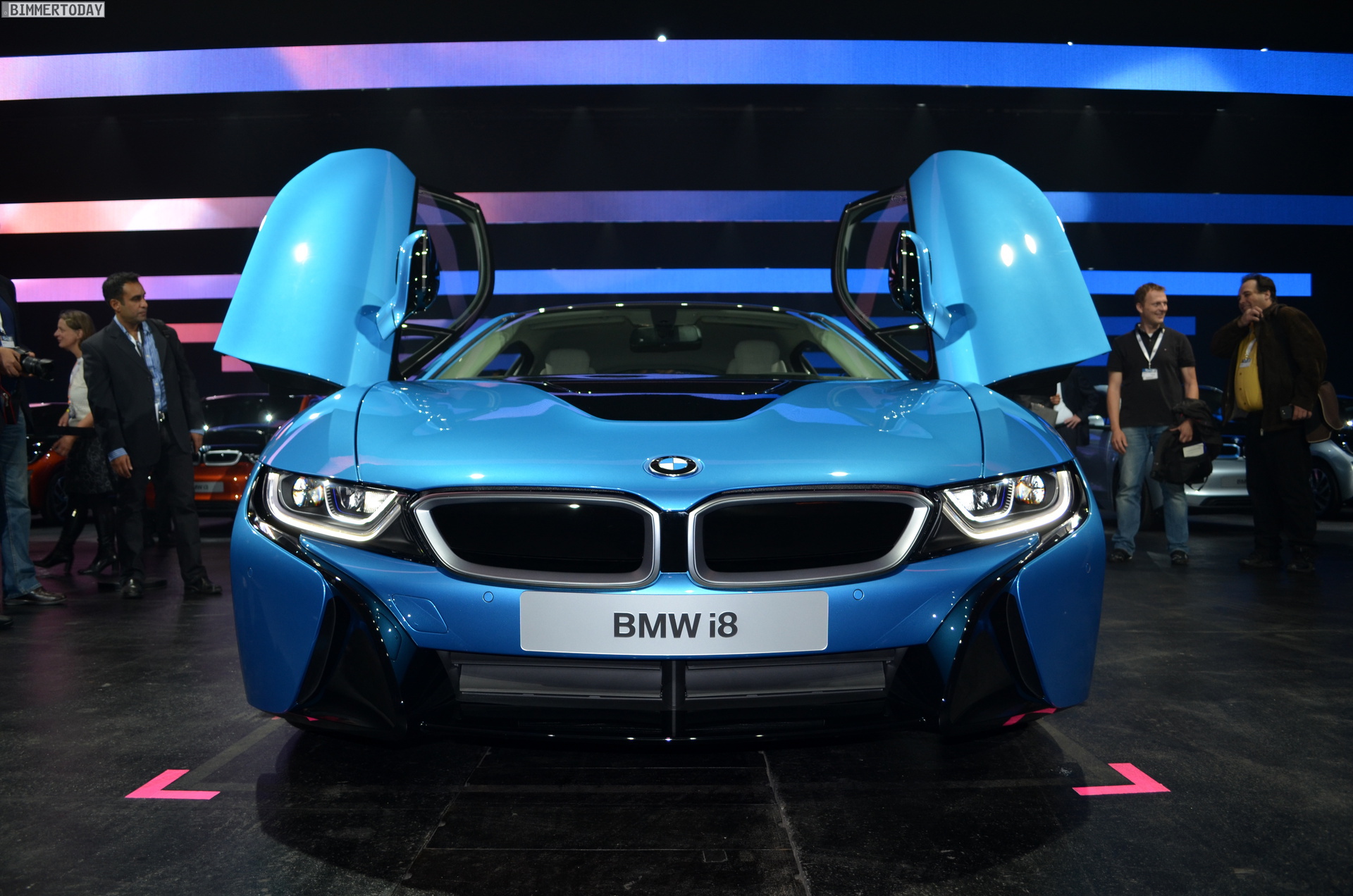
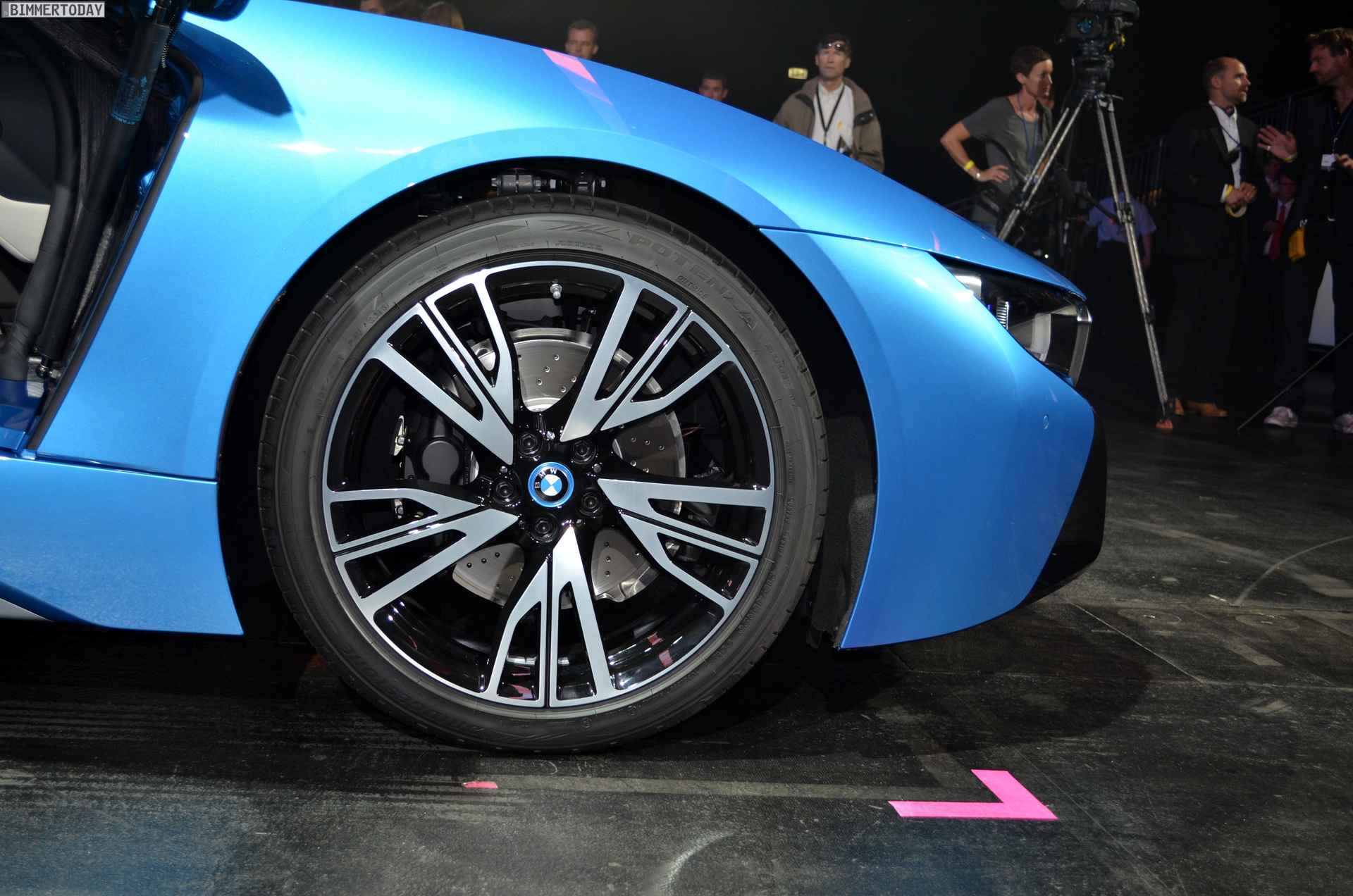
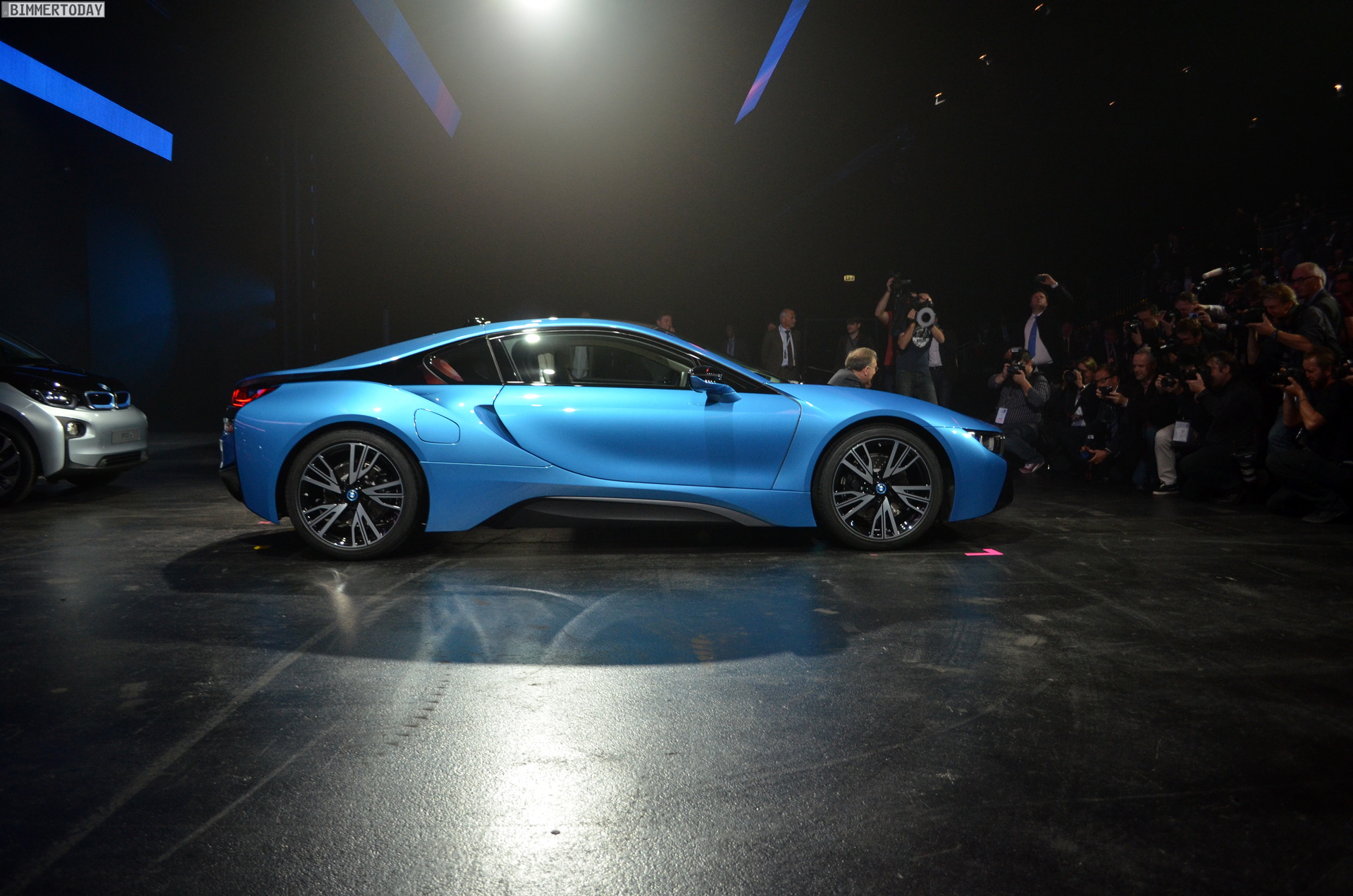

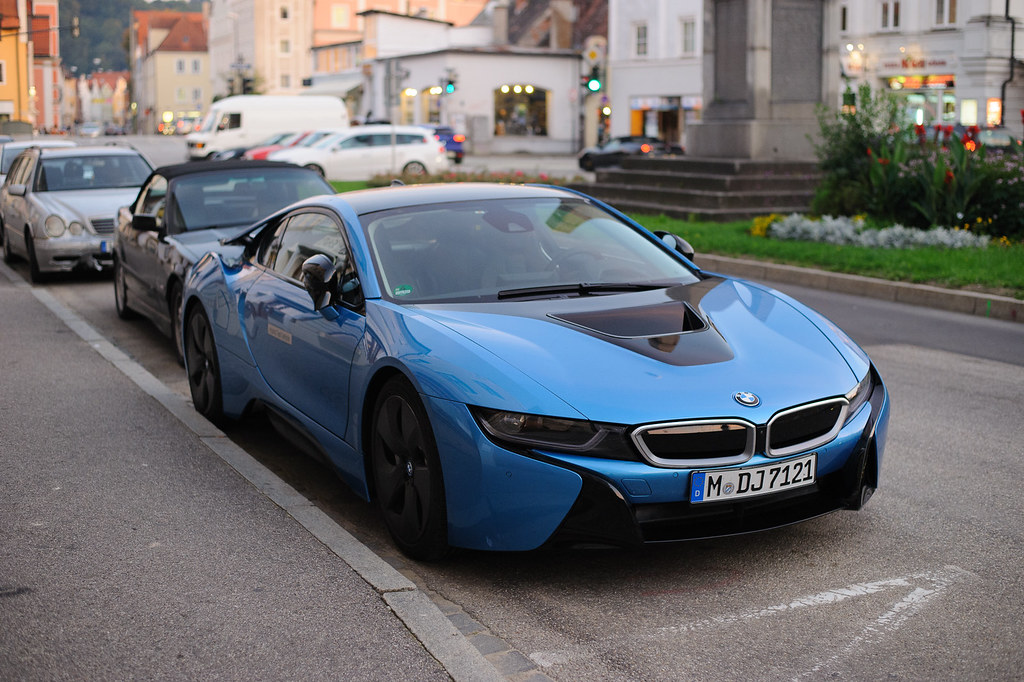
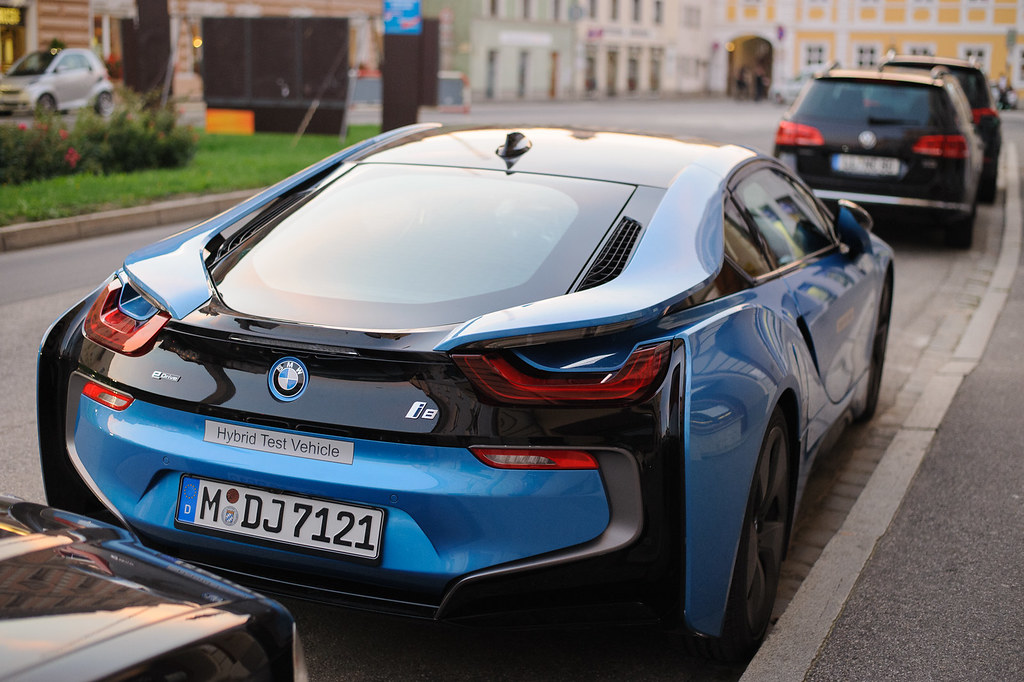


Comentário